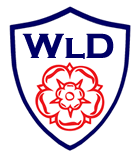Walton & Lower Darwen Villages
Who invented the story that “from Walton Bridge looking towards Ribchester you overlook the richest treasure in England”? Was this treasure dug up by chance on Ribble banks at Cuerdale in 1840? A spade struck into a hidden chest, the lead split and out spilled streams of silver coins and many silver ingots. Since that hoard, possibly a treasure chest containing a fleeing army’s pay after Brunanburgh, was exposed to the startled gaze of the labourers, there have been no more finds! To hope for more around Walton must be unrewarding. In the last century the historic earth has been overlaid thickly by industrial growth, Walton village and broad highways. Walton (le Dale) and Bamber Bridge always channeled trade and travellers towards Preston, so sharing the flow of history.
It’s most exciting days, loaded with drama, were in the Civil War. The Battle of Preston in 1648 flowed between Preston and Walton Bridge, and when it was won (Oliver) Cromwell took a well-earned rest to write his despatches at the inn on Darwen Bridge, the ‘Unicorn’. Charles II went by three years later. In 1715 Stuart supporters in the first Jacobite rebellion were here, and another Charles, the Young Chevalier, spent a night at Walton Hall in 1745.
In the eighteenth century the ‘Unicorn’ was a meeting place for numerous Lancashire ‘big names’ in a so-called mock corporation. Their complete regalia is in the Harris Museum in Preston, and also the minute books which the curator let me peruse at my leisure.
The first meticulous entries were in 1705, the last casually written in 1796. Stuart loyalists predominate among early paid-up members in Queen Anne’s reign-Towneleys, Butlers, Blundells, Tyldesleys. Was the hilarious buffoonery and horse play indulged in by certain of the officers-slut kisser, custard eater, house groper-merely a cover for more serious Jacobite discussions in the years when everyone wondered whether the Queen’s choice of successor would be James Edward Stuart or her Protestant kins-man George of Hanover? The corporation’s major, his deputy, recorder, physician, pastor and poet laureate (one year he was the Reverend. Mr Shakespear) had more important roles.
After 1715, when many members were of families penniless or exiled for their part in it, old Roman Catholic names are fewer. After 1745 enthusiasm waned, attendances were desultory until the society wound up, and the book was used for the scribblings of subsequent ‘Unicorn’ landlords’ children.
Villages near Preston and Walton were at once involved in the factory system in the first stage of industrial revolution. The Darwen water was what the bleachers needed; the dairy herds of the valley supplied the dung and urine needed for dye fixing in the new print shops; large cotton weaving mills followed, all in rural settings. Moons Mill and Kittlingbourne were early starters, and Gregson Lane and Bamber Bridge were two villages with many immigrant Irish who stayed over after the canal, turnpike road and later the railway building. Together with the native hand-loomers here was a ready made labour force. And so it remained for a century and more until slump, recessions, short time, ‘rationalisation’ and the shut-down of some mills forced out long established families. There is a hard core of village stock staying put, but the young must find work in Preston.
Industrial premises dwindled in number but they carried on long after the manufacturers who founded them were forgotten. In about 1800 the owners of Darwen Bank, Cooper Hill and, further along the Darwen valley, the Feildens of Feniscowles and Witton Park, the cotton magnates, replaced the ancient ‘extinguished’ gentry on their ancestral homes. Each then seemed settled for centuries ahead. None remain.
At Hoghton things worked out different. On the surface none would guess this village, the prettiest by the Darwen, ever had any industry on the green slope towards the Tower, a farseen landmark. The farmlands all around were well cared for, the buildings in good shape. The satisfying grouping of church, school and Church Farm is on a shared hilltop, trees behind, the sky above makes, in whole and in part, a perfect picture of happy contented rurality. Turn me down lanes off the highway: ducks on ponds, geese hissing, as you in pass, cows ambling to shippons. Or discover Cripplegate, Goose-foot, Dearbought and Barracks Lanes. Or watch village cricket on the sports field, join the villagers at a meeting or social gathering in the village hail. An ideal village? Housing promoters say so: “most d’esirable to live here, our homes excel in their situation”! New houses everywhere, along byways, down near the Bottoms.
Out of sight, where Darwen emerges into sunlight from a deep and dark ravine, a complete mill village: two mills, sociable rows of stone-built cottages up steps, some ‘prettified’ with picture windows and flush doors, all occupied, but not many, by the offspring of weavers. ‘Shut down’ came in 1969, the factory buildings offered for sale in lots. In 1972: great clanking wheel broken, milldam choked, and in the vast weaving sheds all machinery gone, only wind stirring cobwebs across doorless, windowless holes. Hoghton Bottoms was a piece of the Old Lancashire.
